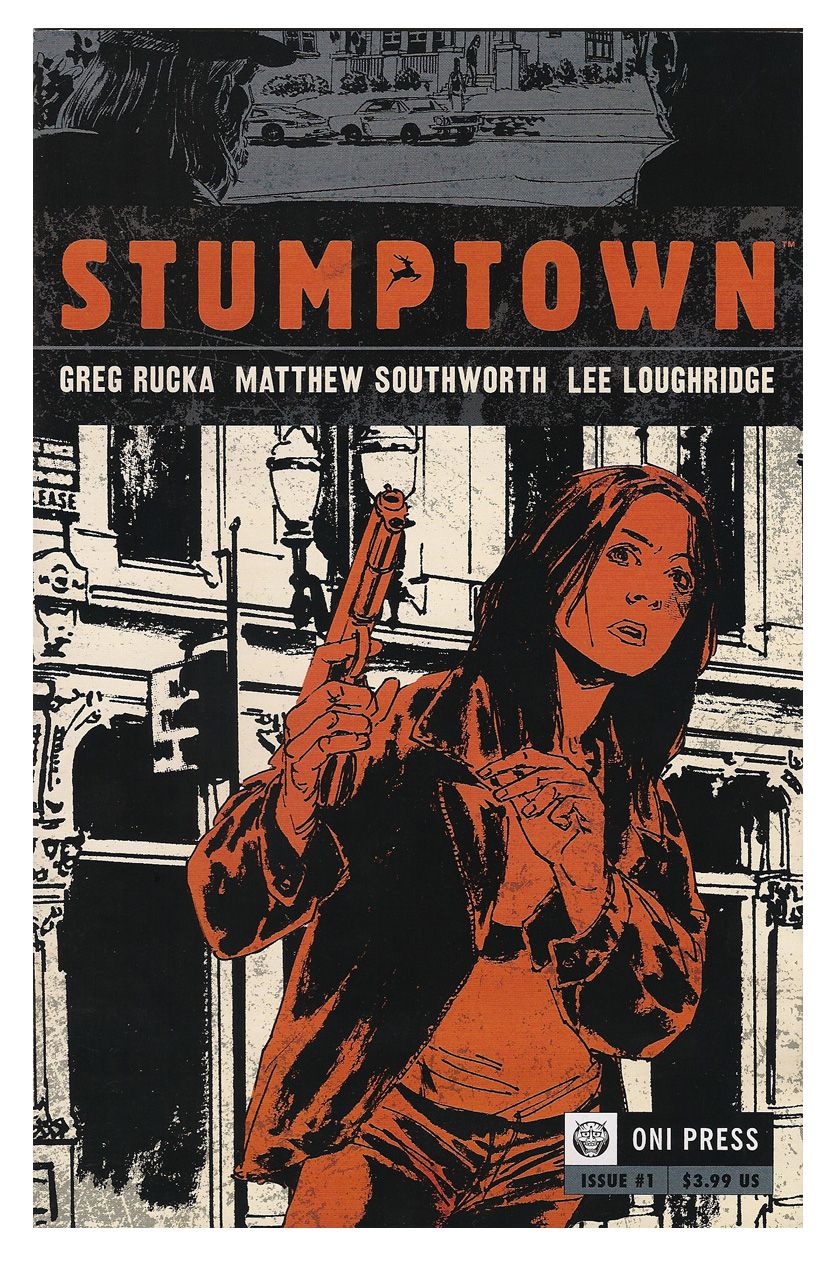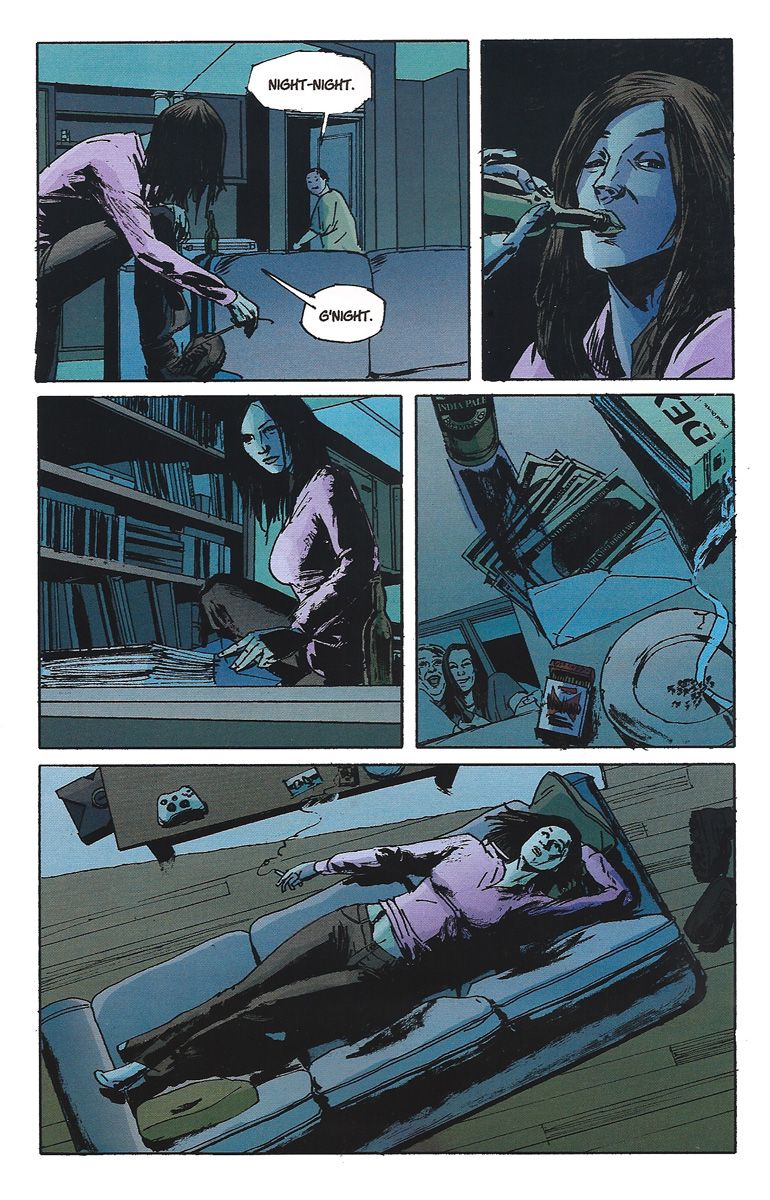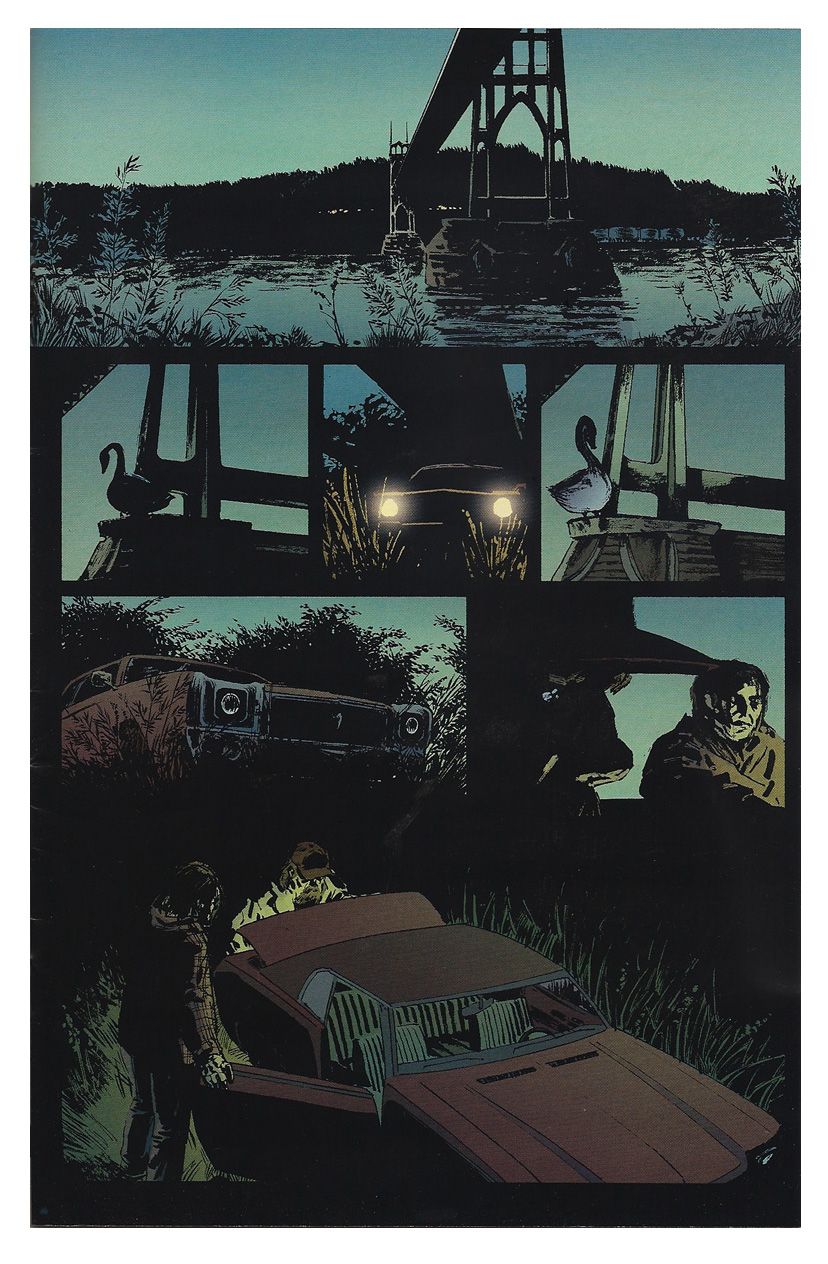Stumptown #1. Greg Rucka (writer), Matthew Southworth (art), Lee Loughridge (colors). Oni Press. $3.99
While trying to write this, my very first CSBG column, I hit a wall. And as I worked to break through that wall, I realized that it’s pretty easy (for me at least) to rage against the machine in regard to women in comics and all of comics mighty related sins, but when it comes to talking about what is actually WORKING with women in comics, it often seems an insurmountable task.
And I think that's part of the reason that this column suddenly seemed impossible to write. These days we view women in comics under an impossible microscope, where every drawing, line of dialogue, plot device, and item of clothing is analyzed ad nauseam. What can possibly thrive under that kind of scrutiny? Maybe nothing. And so by dictating that this column, however broadly, will discuss “women in comics” I invited that same microscopic gaze and felt suddenly crippled by it.
There are so many people – writers, artists, and editors, even in mainstream comics, that are trying to do it right – trying to drag the rest of the industry kicking and screaming into the twenty-first century. But sadly they remain the minority, and so as long as comics continues to be a place where things like the Marvel Divas cover nightmare happens on a regular basis, I think the microscope is unfortunately something we’ll have to get used to – for good or ill.
So, microscope in hand…Greg Rucka’s Stumptown #1.
I’m a fan of Greg Rucka’s work, though I have certainly not read all of it, what I have read usually hits the mark. Whiteout was one of my first introductions to a female character that acted like a normal human being and wasn’t constantly wearing a tank top six sizes too small for the absurd double D’s spilling out of it. And while our heroine Carrie was pretty, she didn’t look like some gorgeous Hollywood starlet that had accidentally fallen into a U.S. Marshal's uniform and Antarctica (although credit there is of course also due to Steve Lieber). Whiteout was one of those books that turned me around on comics at a vulnerable point, and I was grateful to Rucka then, but reading Stumptown, I find myself even more grateful that he’s still doing it now.
The look of the book is gritty and real, perfectly fitting to Rucka’s world and characters. Matthew Southworth’s art is both exquisite and consistent – the latter a quality I’ve come to regard highly in comic artists. But perhaps most importantly Southworth’s art feels incredibly respectful of and appropriate for Rucka’s story. Lee Loughridge’s colors are an equally appropriate dark and moody color palette. And the end result is something delicious that just feels right.
As for the story, Rucka sets up a solid detective yarn and gives us just enough from everyone to keep me interested and invested without slowing things down. Dexedrine Callisto Parios (fortunately called Dex from here on out) has the beginnings of a great character. A private investigator with a past, a little gambling problem, and a brother at home to look after. Dex is clever and cool-headed without falling into the badass barb slinging cliché that so often happens with “tough” female characters. Dex is oh so very human and flawed, and as such, when she gets into trouble she isn't able to just magically get herself out of it, though her wits and calm under fire prove to be her best weapons. When she gets punched in the face, she goes down, like anyone would. And she gets an ugly shiner like anyone would. In our comics world of such constant unrealistic violence, I find myself really enjoying a realistic take on the ramifications of something like a single punch. It's refreshing and as a result she’s a character I’m anxious to get to know better.
The story is set in Portland, and it seems to me an inspired choice for a detective pseudo noir story, somehow both unexpected yet fitting. On the surface it seems like an unusual choice – straying from the more typical New York City, Chicago, and even Los Angeles - settings common to detective noir stories, but it functions as a great canvas with inspiring vistas and dark brooding landscapes, somehow new and predictable at the same time. The name of the comic, Stumptown, is a common nickname for the city of Portland and in a nice meta tie in, it is also the name for a comics festival - Stumptown Comics Fest - held yearly in Portland.
I’m generally not a fan of jumping back and forth in time unless it’s critical to the story – and while it’s not necessarily critical here – it does work to the story’s advantage and adds to, rather than takes away from the narrative. Some of the more subtle panels are given more punch by being told out of time as they are, and what would otherwise be a fairly meaningless bit of dialogue or action is imbued with quiet importance.
Overall I think Stumptown is a most excellent start and I will certainly be tuning in for the next issue. Even under the microscope, Rucka has managed to ‘do no harm’ and simultaneously set up a great mystery to be solved by a character I’m already rooting for.




